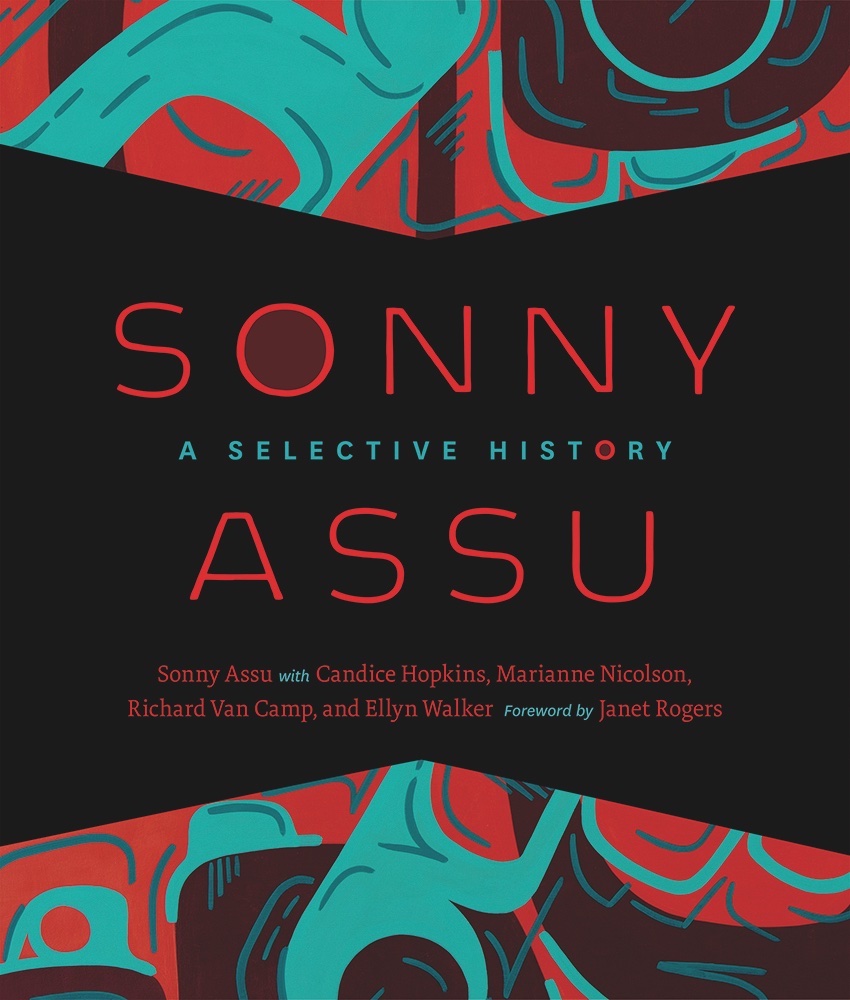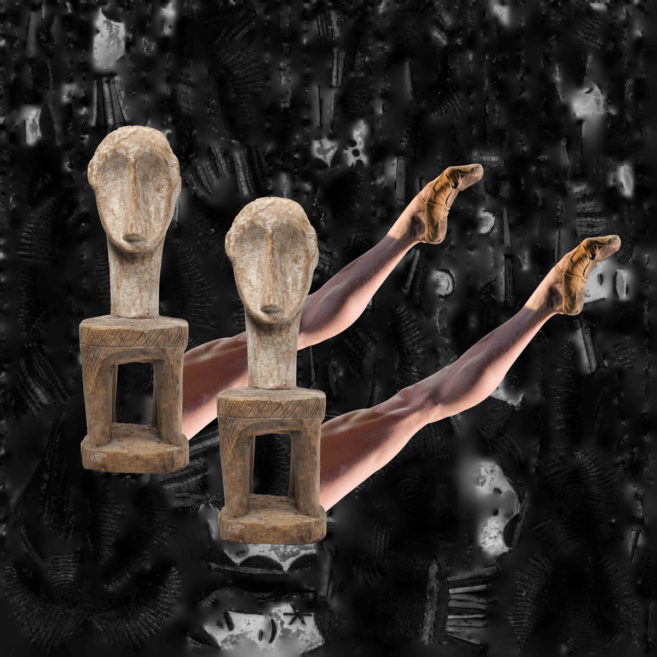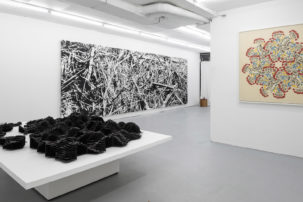A Selective History documents key installations and artworks from Sonny Assu’s already prolific career as a light-hearted badass, one who doesn’t blink an eye at “defacing” some of Canada’s most treasured artworks.
His futuristic digital intervention What a Great spot for a Walmart! (2014), for instance, along with other works from the same series (which appear in the anthology), contends with the absence of Indigenous peoples in Canadian landscape paintings by creating Indigenous presence with formlines. In her essay for A Selective History, Marianne Nicholson calls these interventions “visual gestures akin to tagging,” whereas Candice Hopkins argues in hers that the “cultural cannibalism” of Emily Carr is an easy target for Assu’s repurposing of camp and pop aesthetics, part of his unique brand of Ligwiłda’xw Kwakwaka’wakw “remix” culture.
Assu’s great-great-grandfather, Chief Billy Assu of the Wiwek-a‘e of the Ligwiłda’xw, is a figure whose spirit of refusal informs Assu’s practice. Installation photographs of Billy and the Chiefs: The Complete Banned Collection (2012) appear in A Selective History: elk-hide drums arranged on the wall, painted with formlines to look like LPs. Assu refers to his LP works as “a conceptual record” of colonial violence—a punk-rock mixtape, if you ask me.
Assu embodies the emboldened, in-your-face politics of punk-rock music and its ethos, although he might not agree, having viewed himself during his youth as a “chubby kid with an affection for sweatpants,” according to his own opening remarks for A Selective History. I immediately recognized the boy that Assu describes—sweatpants and all. Perhaps it’s more factual to say that Indigenous peoples are the original stick-it-to-the-man types of Turtle Island. All the small resistances add up to The Rev, someday.
The takeaway for me is that Assu’s mastery over his craft extends to an aesthetic refusal deeply tied to his ancestral teachings, his family, his territory and his community. With his practice, documented extensively in the anthology, Assu wants you to know that he will always be, at his core, a nerd-boy troublemaker for his people.

 Cover of the book Sonny Assu: A Selective History.
Cover of the book Sonny Assu: A Selective History.






